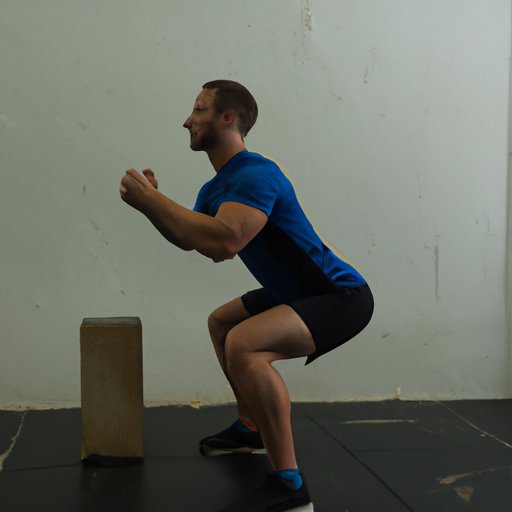Introduction
Squats are an incredibly versatile exercise that can be used to target almost every muscle in the body. They are one of the most popular exercises among athletes and fitness enthusiasts alike and are often included in fitness programs and workouts to build strength, increase power, and improve overall health and fitness. But what do squats work out? This article will provide a comprehensive guide to what muscles squats work out and how they can help improve your athletic performance and overall health.

A Comprehensive Guide to What Muscles Squats Work Out
Squats are a compound exercise that works several different muscle groups simultaneously. The primary muscle groups targeted by squats are the quadriceps (front of the thighs), hamstrings (back of the thighs), glutes (buttocks), and core muscles (abdominals and lower back). However, there are also several secondary muscle groups that are activated during a squat, such as the calves, hip flexors, and shoulders.

How Squats Can Help Improve Your Athletic Performance
Incorporating squats into your workout routine can have a number of benefits for your athletic performance. Squats can help improve your agility and mobility by strengthening your legs and improving your balance. They can also help increase your power and strength, which can be beneficial for activities that require explosive movements, such as running and jumping. Additionally, squats can help increase your speed and coordination by training your body to move more efficiently.
The Benefits of Incorporating Squats Into Your Workout Routine
In addition to improving your athletic performance, there are several other benefits of incorporating squats into your workout routine. Regularly performing squats can help improve your overall health and fitness by strengthening your muscles, increasing your flexibility, and improving your cardiovascular health. Additionally, squats can help increase your muscular endurance, allowing you to perform more reps and sets with heavier weights. Finally, squats can help reduce your risk of injury by strengthening the muscles and joints around the knee, hip, and ankle.

Squat Form: Tips and Techniques for a Safe and Effective Workout
Proper form and technique are essential for getting the most out of your squats and avoiding injury. When performing a squat, it’s important to keep your head up, chest out, and back straight. You should also make sure to keep your weight on your heels, not your toes, and drive through your heels as you come up from the bottom of the squat. Additionally, it’s important to avoid common mistakes such as arching your back and bouncing at the bottom of the squat.
Squats: Why They Should Be Part of Your Strength Training Program
Squats are an essential part of any strength training program. Not only do they target multiple muscle groups simultaneously, but they can also help improve your athletic performance and overall health. There are several different types of squats that can be incorporated into your workout routine, including traditional barbell squats, goblet squats, front squats, and overhead squats. As you progress with your squats, it’s important to gradually increase the weight and reps to ensure that you are challenging yourself and continuing to see results.
Conclusion
In conclusion, squats are an incredibly effective exercise that can be used to target a wide range of muscles in the body. They can help improve your athletic performance by increasing your agility, mobility, power, strength, speed, and coordination. Additionally, squats can help improve your overall health and fitness by increasing your muscular endurance and reducing your risk of injury. Finally, squats should be a part of your strength training program in order to get the most out of your workouts.
(Note: Is this article not meeting your expectations? Do you have knowledge or insights to share? Unlock new opportunities and expand your reach by joining our authors team. Click Registration to join us and share your expertise with our readers.)
